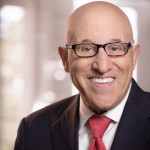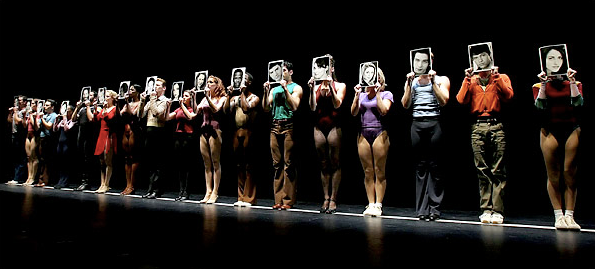
This 4th of July weekend take a few minutes to watch a balloon twister at work. You know, those street performers who expand, twist and tie balloons turning them into some pretty impressive sculptures.
Why would a business presenter want to watch a street artist twist balloons? Because the best of them have a lot to teach us about grabbing, keeping and inspiring audiences.
LESSON #1: START STRONG
Here in Boulder, CO, we see balloon twisters almost every weekend. Most people marvel at the sculptures they create but we are even more impressed by the crowds they capture and delight. These artists attract their audiences as they walk by distracted – texting, talking, window shopping and chasing after kids.
In a sense, business and professional audiences are walking by, too. They are not seated waiting patiently for the speaker to get to the point. Instead they are multi-tasking in their head and on their personal technology.
So take a clue from balloon twisters: start with strength.
Balloon twisters begin with a “bang”. Not that they pop the balloon, but they start hard and fast to get people’s attention. They take a breath and push that air forcefully and confidently into the balloon.
They begin with a big move and so should you. Use your opening words to get the audience’s attention and to set the tone for the rest of the presentation. Starting off with the standard “Thank you for taking the time to hear what I have to say today. It is great to be here in your wonderful city” will likely result in repointing the audience back to their smart phones or worse … the door.
Instead, do what balloon twisters do: attract attention and get the audience interested by creating a curiosity gap: “What are they going to create with those balloons?”
Presenters: create a gap between what the audience already knows – or think they know – and what you are going to tell them.
Here’s one option: open with a question. Start out with “Do you know what you should do?” and watch as the audience mentally – and sometimes verbally – responds with “What?” or “About what?”
Answer with the main point of your speech and you’re on your way. You will have demonstrated without words that, just like balloon twisters, you are competently in control of the subject matter and yourself.
LESSON #2: CREATE A SOUND STRUCTURE
Once balloon twisters create their curiosity gap, they gradually build suspense, intensity and drama as they shape their sculpture one step at a time – tying off each balloon as they do – completing it so everything links together.
When they get a sense that the audience is drifting, twisters do something quick and unexpected to get them back. One we saw even burst a balloon and joked about it.
LESSON #3: TIE A KNOT AT THE CLOSE
All of the balloon twister’s efforts lead to a dramatic close – a work of art – and a memory people can take away.
Just like they do, you want to build to a dramatic close where the audience can leave being or doing something differently.
Fizzle out at the end and you’ll let some or all of the air out of the balloon. Try to do too much with an over the top close and you’ll burst the balloon leaving the audience with nothing to take away.
Don’t let the air out at the end. Position your audience to walk away with a stunning multi-colored balloon sculpture.
Summing up from the business presenter lens:
- Grab attention and create a curiosity gap.
- Gradually build intensity, suspense and drama.
- Pay attention to the audience and get them back if they drift away.
- As you make different points, tie them down securely.
- Lead toward a compelling close the audience can take away.
Do you build your talks that way?
Join us at The Speaking Intensive. Presenters from The Chicago Bulls, Merrill Lynch, Rockwell Collins and 40 other firms already have. Now it’s your turn. May sold out. Just 2 seats left in the July session. Catch the early registration discount for the September session!
© Copyright 2014 The Parisse Group, Inc.

|
Hall of Fame speaker Alan Parisse has been coaching presenters and delivering keynotes for over 25 years. Named “One of the Top 21 Speakers for the 21st Century” by Successful Meetings Magazine, he is a keynote speaker for a wide variety of industries and organizations. Alan is a passionate presentation coach to executives, financial advisors, sports stars and sales presenters. |

|
Lisa Casden has been coaching presenters for 10 years. A former professional figure skater, coach and choreographer, Lisa leverages her unique background and point of view to help speakers organize their physicality in ways that best support their message. |

… Larry the Cable Guy, John Kennedy, Rodney Dangerfield, Johnnie Cochran, and Martin Luther King have in common?
Foundational phrases! Short, memorable phrases that sum up the core of a presentation and upon which talks are built.
Since our brains tend to remember a few consecutive words that paint a memorable picture, make your phrase pithy and picturesque. Say it early and repeat it at least a few times during your speech. Make it more memorable: pause for a beat or two before and after you say your phrase. Then add texture and complexity by emphasizing different words and varying the cadence and tone each time you repeat it. If appropriate, you might make it the last words out of your mouth at the end of your talk.
Here are four famous foundational phrases from speeches:
- Martin Luther King had a foundational phrase in his “I Have a Dream” speech.
- Ronald Reagan did too with “Mr. Gorbachev, tear down this wall.”
- John Kennedy had “Ask not what you country can do for you …”
- Attorney Johnnie Cochran summed up a 12 week trial by repeating the phrase with “If it doesn’t fit, you must acquit.”
Some comedians have defined their stage persona with a foundational phrase, and they repeat it in virtually every performance:
- Jeff Foxworthy: “You might be a redneck.”
- Rodney Dangerfield: “I get no respect.”
- Larry the Cable Guy: “Git’er Done.”
Then there’s me. I did it at the Million Dollar Round Table with “People Need Your Advice.”
Join me at The Speaking Intensive to uncover and build your foundational phrases. Presenters from United Technologies, Mass Mutual & MFS and 40 other firms already have. Now it’s your turn. The May session is sold out. Catch the early registration discount for the July and September sessions!

|
Hall of Fame speaker Alan Parisse has been coaching presenters and delivering keynotes for over 25 years. Named “One of the Top 21 Speakers for the 21st Century” by Successful Meetings Magazine, he is a keynote speaker for a wide variety of industries and organizations. Alan is a passionate presentation coach to executives, financial advisors, sports stars and sales presenters. |
Zzzzzz … Start your presentation like you mean it. Openings are prime time. Use yours to connect, spark interest, elicit emotion, and attract attention. Don’t waste it on clichés and platitudes.

There are lots of options. Depending on the group, the setting, your objective, and your style, you might:
- Explode with energy and enthusiasm.
- Say something significant or momentous.
- Draw them in by standing silent, calm, and confident.
- Ask a compelling question.
- Issue a challenge.
- Confuse them just enough to provoke curiosity.
- Tell a story that makes a powerful and relevant point.
Ideally, your opener will create a ‘curiosity gap’: a void between what they already know and what your opener makes them eager to know. Whatever you do, make your opener a good one. Bore them at the beginning and good luck getting them back.
Learn the secret to explosive starts and more.
Join me at the next edition of The Speaking Intensive.
Presenters from United Technologies, Mass Mutual & MFS and 40 other firms already have. Now it’s your turn.

|
Hall of Fame speaker Alan Parisse has been coaching presenters and delivering keynotes for over 25 years. Named “One of the Top 21 Speakers for the 21st Century” by Successful Meetings Magazine, he is a keynote speaker for a wide variety of industries and organizations. Alan is a passionate presentation coach to executives, financial advisors, sports stars and sales presenters. |

“Dance 10 – Looks 3!” – In the musical A Chorus Line, a talented dancer broke into a famously funny and, for the time, off-color lament about losing out to lesser, but prettier dancers. When it comes to style and substance, many speakers suffer a similar challenge. The dancer solved her problem with plastic surgery. Speakers can meet their challenge by developing a healthy balance.
Let’s face it. While “Style 10 – Substance 3” can make for an enjoyable presentation, the audience will come to realize there is “no there, there.” Similarly, “Substance 10 – Style 3” will likely leave the audience bored, overwhelmed and having gained little.
The good news is that you don’t need to be a “10” at either. Audiences will appreciate and gain more from a speaker who is a “7” and a “7’ than they will from one who is a “10” and a “3” or the reverse. Get your presentation to an “8” and an “8” and you will be awesome.
Six words can help. Work to make your presentations simple, substantial, earthy, elegant, witty, and wise.
Simple – Not simplistic. Know your subject so well that it you can discover its underlying simplicity and present it clearly.
Substantial – Get close to knowing 30X more than you say so you will exude the confidence needed to have your ideas accepted.
Earthy – Don’t be crude, but be practical and down to earth.
Elegant – Be refined, precise, stylish, and seemingly effortless.
Witty – Have the ability to simultaneously illuminate and amuse.
Wise – Be informed, foresighted, savvy, discriminating and all the other wonderful things that word means.
Learn this and more and make it your own at The Speaking Intensive!
 |
Hall of Fame speaker Alan Parisse has been coaching presenters and delivering keynotes for over 25 years. Named “One of the Top 21 Speakers for the 21st Century” by Successful Meetings Magazine, he is a keynote speaker for a wide variety of industries and organizations. Alan is a passionate presentation coach to executives, financial advisors, sports stars and sales presenters. |
When planting points an audience doesn’t want to hear, try veering off to the side and then circling back.
Here’s How:
Rather than plowing straight ahead, first use a seemingly unrelated example to get the audience to buy into the underlying concept. Then circle back and show that concept also applies to their situation.
The Backstory:
I stumbled on this idea 25 years ago, when I was simultaneously challenged to create two presentations to be delivered multiple times. At first blush, the only thing the assignments seem to have in common was that both messages would challenge an existing belief system and long-standing standard of practice. The assignments were:
1. Get health professionals to consider supplementing their traditional practice with alternative medicine.
2. Encourage life insurance agents to offer their clients investments such as mutual funds.
The Strategy:
With life agents, I started by talking about the changes in health care. Specifically, how allopathic medicine (that’s MD medicine) came to dominate health care because it best met the major health challenges of much of the 20th century: Mortality. Specifically, far too many people were dying in the prime of life from infectious disease, war and accidents. If you have a gun shot wound, you want an MD, not an acupuncturist or a chiropractor.
Then, I pointed out that while mortality is still an issue in the 21st century, the aging population faces another challenge: Morbidity. We have extended the ride of life, but it can get pretty bumpy as we age. As a result, MDs owe it to their patients to expand their definition of health care to include different approaches. I added a few quips to lighten the mood, the life agents bought into the concept.
Then, and only then, I pointed out the parallel with their world. Life insurance became the great industry it is because it met the most significant financial challenge facing families for much of the 20th century: Mortality. Human issues aside, for most families, the premature death of the sole bread-winning father was a financial catastrophe.
As in health care, times changed. Premature death declined significantly and sole bread-winning fathers have become the exception. As a result, the greatest risk most families face today is not dying too soon, but living too long. The risk of outliving one’s money – Financial Morbidity – is an investment risk. Life insurance agents owe it to their clients to offer solutions that can help reduce that risk.
It worked.
As you might guess, when I spoke to health professionals, I led with the life insurance story.
That worked too. What works for you?

Hall of Fame speaker Alan Parisse has been coaching presenters and delivering keynotes for over 25 years. Named “One of the Top 21 Speakers for the 21st Century” by Successful Meetings Magazine, he is a keynote speaker for a wide variety of industries and organizations. Alan is a passionate presentation coach to executives, financial advisors, sports stars and sales presenters.
When the speaker said “We were in a pickle, so we threw a Hail Mary pass”, most of the audience understood that he had been in a difficult situation and took  desperate measures in the hope of an unlikely success. The problem is that a third of the audience was from other cultures. Although fluent in English, they sat wondering how he could have had a religious experience preserved in a cucumber.Recently, while preparing a presentation for an audience that will be translated into twelve languages, I was reminded once again just how culturally dependent our presentations are.
desperate measures in the hope of an unlikely success. The problem is that a third of the audience was from other cultures. Although fluent in English, they sat wondering how he could have had a religious experience preserved in a cucumber.Recently, while preparing a presentation for an audience that will be translated into twelve languages, I was reminded once again just how culturally dependent our presentations are.
(more…)







 desperate measures in the hope of an unlikely success. The problem is that a third of the audience was from other cultures. Although fluent in English, they sat wondering how he could have had a religious experience preserved in a cucumber.Recently, while preparing a presentation for an audience that will be translated into twelve languages, I was reminded once again just how culturally dependent our presentations are.
desperate measures in the hope of an unlikely success. The problem is that a third of the audience was from other cultures. Although fluent in English, they sat wondering how he could have had a religious experience preserved in a cucumber.Recently, while preparing a presentation for an audience that will be translated into twelve languages, I was reminded once again just how culturally dependent our presentations are.